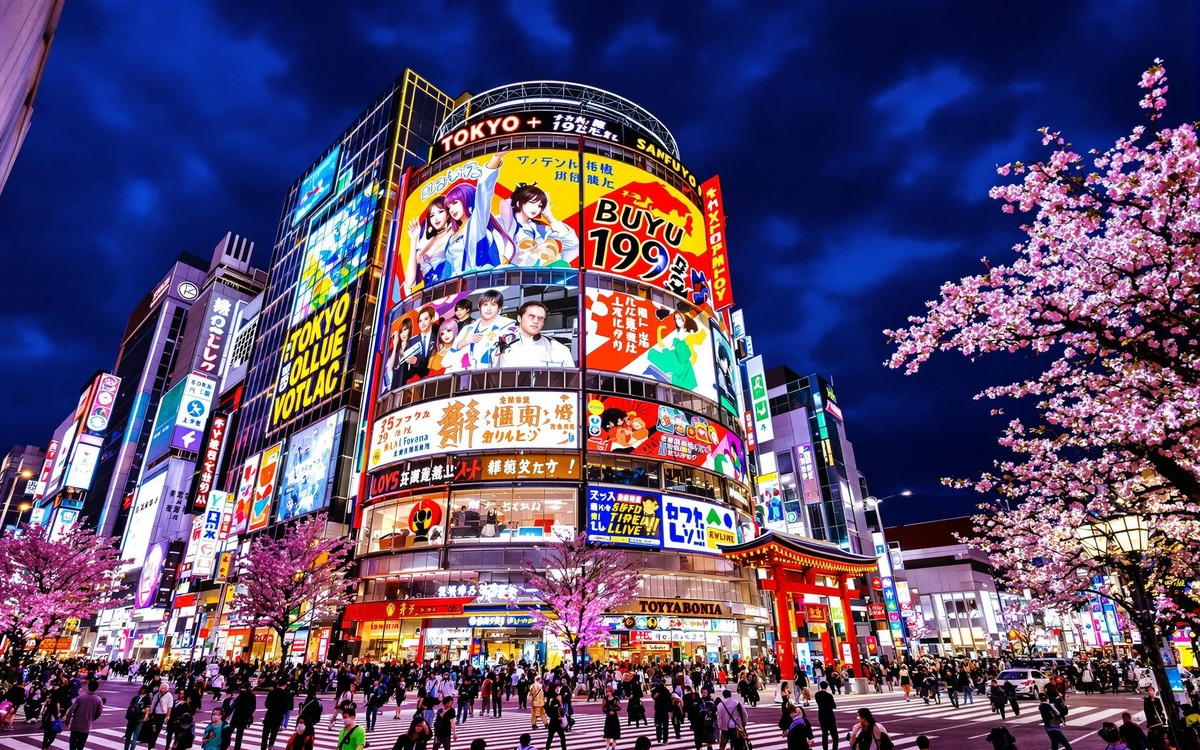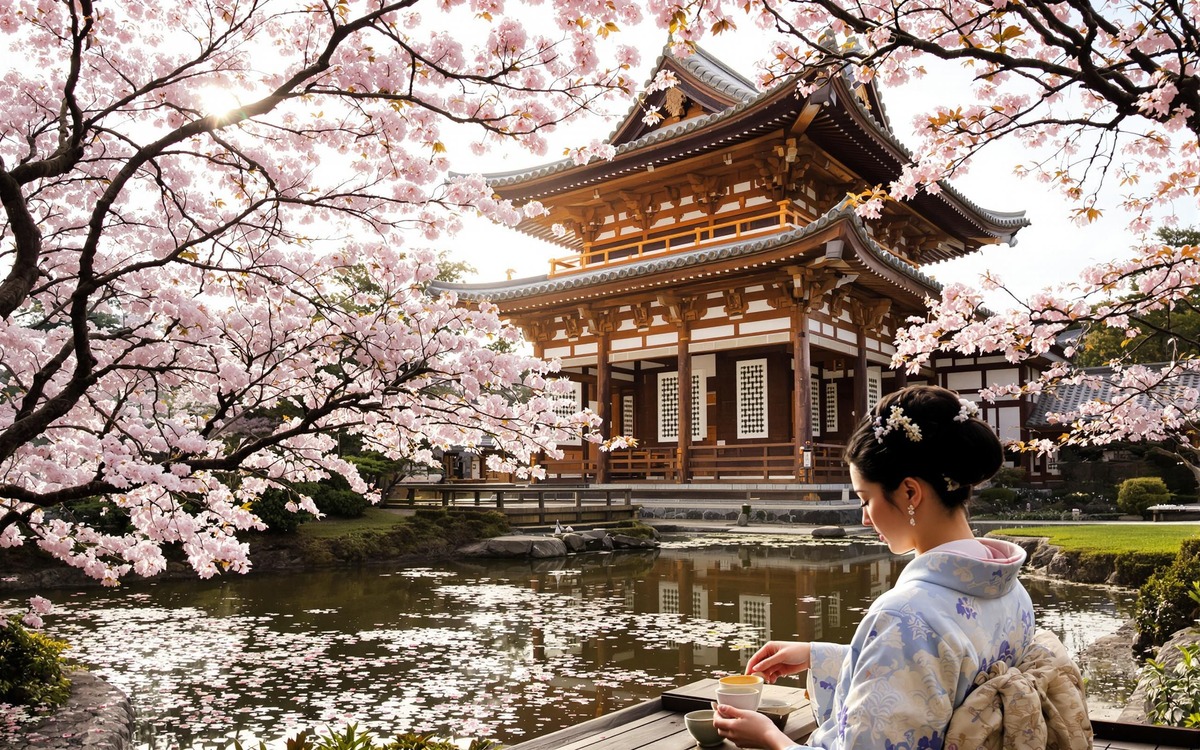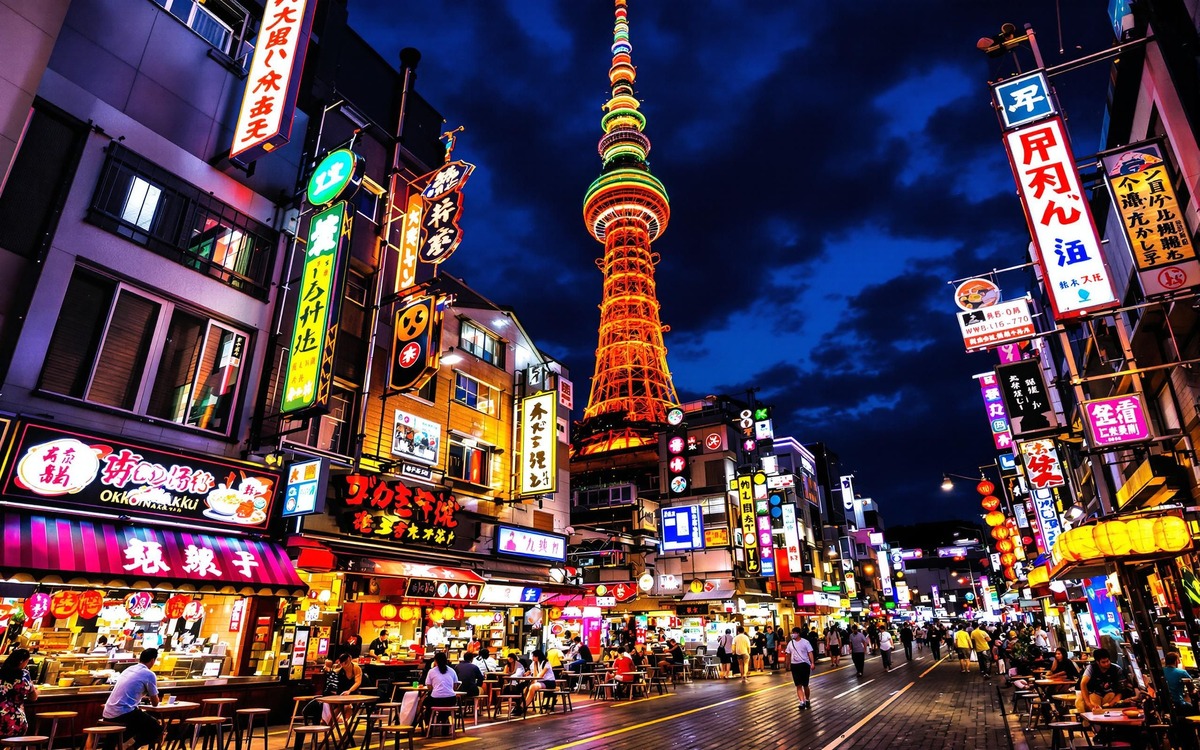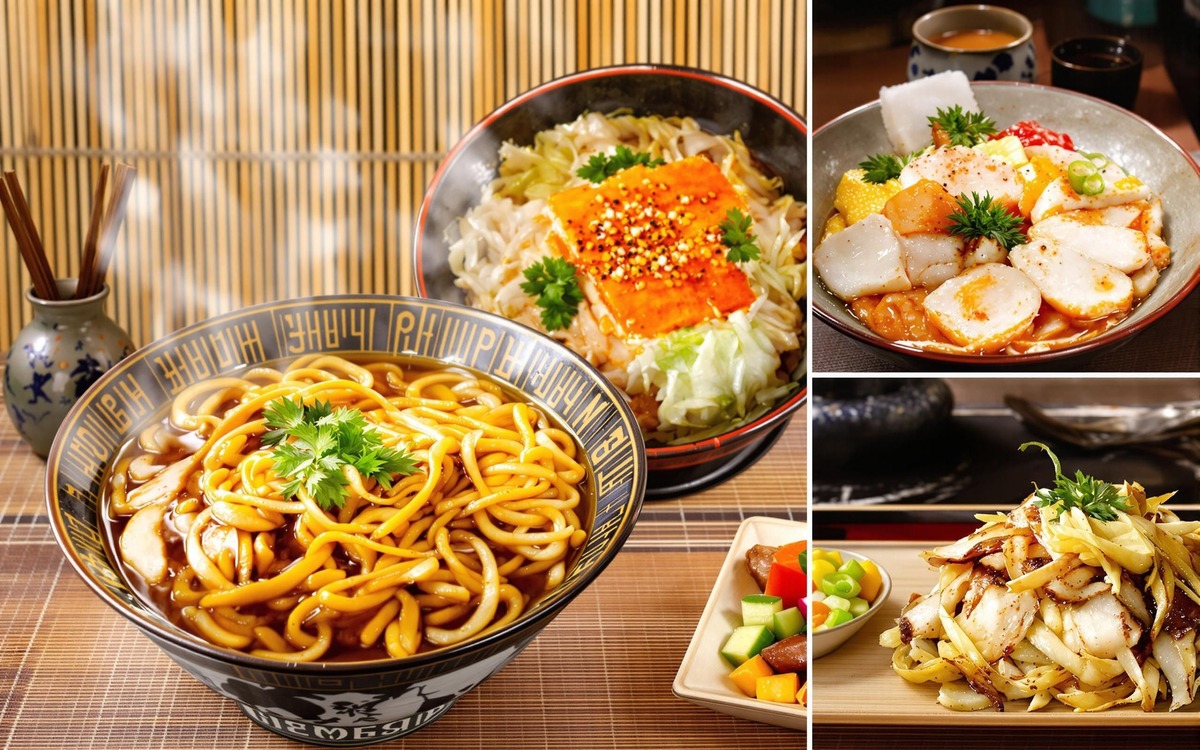1. Introduction
Japan offers a unique travel experience that seamlessly blends ultra-modern urban landscapes with centuries-old cultural traditions. Travelers to Japan can immerse themselves in dynamic cityscapes, explore ancient temples and historic sites, and savor regional culinary specialties that reflect the country’s seasonal bounty and deeply ingrained cultural practices. This article provides a comprehensive itinerary and cultural overview focused on three of Japan’s most significant urban centers—Tokyo, Kyoto, and Osaka. By combining detailed itinerary planning, historical and cultural analysis, and culinary exploration, this report aims to guide travelers in achieving an authentic and multifaceted Japanese journey. Insights presented here are supported by various firsthand traveler reports and curated travel guides, ensuring an in-depth understanding of what Japan has to offer.
2. Itinerary Overview by City
Japan’s major cities each have their distinct character and offer experiences that cater to various interests. The itinerary presented here is designed to help travelers maximize their visit through carefully planned routes that emphasize both traditional cultural encounters and modern attractions.
2.1 Tokyo: Modernity Meets Tradition
Tokyo, the bustling capital city, represents the epitome of urban modernity juxtaposed with deep-rooted traditions. Here, visitors can explore the eclectic neighborhoods of Shibuya, Shinjuku, Harajuku, and Akihabara while also immersing themselves in historical sites such as Senso-ji Temple.

Highlights in Tokyo:
- Cultural Landmarks and Historical Sites:
The Senso-ji Temple stands as one of Tokyo’s oldest and most revered Buddhist temples. For a glimpse into Japan’s modern history, visitors can take a tour of the Tokyo National Museum and the Edo Tokyo Museum, which house extensive collections that span centuries. - Modern Attractions and Pop Culture Experience:
The neighborhoods of Shibuya and Harajuku provide a vibrant mix of fashion, technology, and pop culture. Areas like Akihabara draw in technology enthusiasts and anime fans, while the colorful district of Shinjuku offers delightful opportunities for nightlife exploration and street food . - Culinary Explorations:
Tokyo is a food lover’s paradise, boasting options from high-end omakase experiences to affordable street food and convenient selections at the local convenience stores (konbini). Monjayaki, a local specialty similar to okonomiyaki but with a distinctive watery batter, is a must-try for visitors seeking authentic flavors.
Additional Activities:
Tourists can enjoy unique experiences such as capsule hotels for on-the-go accommodation, themed cafes, and interactive museums that celebrate Japanese culture in innovative ways . A walking tour through areas like Golden Gai and Omoide Yokocho also lends an intimate look at Tokyo’s nighttime charm.
2.2 Kyoto: The Heart of Japan’s Cultural Legacy
Kyoto, once the imperial capital of Japan, exudes elegance, timeless tradition, and refined cultural heritage. The city is famed for its meticulously preserved temples, traditional tea ceremonies, and seasonal culinary delights.

Highlights in Kyoto:
- Historical and Spiritual Landmarks:
With sites like Kiyomizu-dera, Kinkaku-ji (the Golden Pavilion), and Ginkaku-ji, Kyoto offers profound insights into Japan’s historical architecture and spiritual traditions. The presence of Zen Buddhism has heavily influenced the city’s culture, manifesting in both temple food (shojin ryori) and the tranquil garden designs that surround these monuments. - Traditional Culinary Experiences:
Kyoto’s cuisine is deeply influenced by its historical setting. Local specialties such as kaiseki—a multi-course meal that emphasizes seasonal presentation—and tofu-based dishes like yudofu and yuba are staples. Visitors can also savor kyozushi (a unique form of sushi that uses cured fish) and gently brewed matcha from Uji, a nearby city renowned for its green tea. The careful preparation and local sourcing of ingredients echo Kyoto’s centuries-old culinary traditions. - Cultural Artistry and Craftsmanship:
Aside from its food and temples, Kyoto retains an aura of refined craftsmanship. Traditional arts, such as kimono wearing, pottery, and calligraphy demonstrations, allow visitors to connect with the city’s artistic heritage. A stroll through the Gion district at dusk reveals geisha teahouses, narrow alleys, and centuries-old wooden machiya houses.
Experiential Tips for Kyoto:
For an immersive experience, travelers are encouraged to visit local markets where heirloom vegetables known as kyōyasai are showcased and to sample meals at local ryokans (traditional inns) that offer an authentic, multi-course kaiseki meal. Seasonal festivals also present opportunities to witness traditional performances and rituals that have been an integral part of Kyoto’s cultural fabric for generations.
2.3 Osaka: A Dynamic Fusion of History and Modernity
Osaka, often considered Japan’s kitchen, is a lively metropolis renowned for its gastronomic delights, dynamic nightlife, and historic monuments. It offers a relaxed yet vibrant atmosphere that contrasts with the fast pace of Tokyo and the serene elegance of Kyoto.

Highlights in Osaka:
- Iconic Landmarks and Urban Attractions:
The majestic Osaka Castle stands as a testament to the city’s feudal history and architectural brilliance. Beyond the castle, districts like Dotonbori come alive at night with neon lights, diverse dining options, and a bustling street culture that defines modern Osaka. - Culinary Hotspots:
Osaka is famous for its street food. Takoyaki (octopus balls), kushikatsu (deep-fried skewers), and okonomiyaki (savory pancakes) are local favorites that have earned the city its reputation as a food haven. Regional variants, such as Hiroshima-style okonomiyaki, are also highly recommended, though frequently available in metropolitan areas across Japan. For visitors looking for unique culinary experiences, regional specialties like yakitori (grilled chicken skewers), unagi (eel), and teppanyaki (Japanese-style barbecue) offer a taste of local expertise. - Modern Attractions and Entertainment:
In addition to its culinary appeal, Osaka boasts attractions such as Universal Studios Japan and teamLab’s innovative exhibits in botanical gardens. The Retro Shinsekai neighborhood provides a nostalgic glimpse of early-20th-century Japan, replete with local lore, diverse street food, and historic architecture. An active nightlife scene filled with izakayas (Japanese pubs), trendy bars, and shopping districts like Don Quijote further underscores Osaka’s multifaceted charm.
Experiential Opportunities in Osaka:
Travelers can take specialized walking tours, explore bustling shopping districts, or enjoy serene daytime visits at historical sites during day trips around the region. The recommended approach is to combine modern culinary experiences with a visit to classical landmarks, ensuring that travelers leave with a well-rounded impression of Osaka.
3. Cultural and Historical Landmarks in Japan
Japan’s history is a rich tapestry woven from centuries of artistic, architectural, and cultural evolution. Each city presents a unique fragment of this legacy, inviting travelers to explore both preserved monuments and sites of contemporary cultural significance.
Tokyo’s Historical Legacy:
Tokyo, though primarily known for its modernity, offers numerous cultural sites that shed light on Japan’s historic transformations. The Senso-ji Temple in Asakusa, reputedly dating back to 628 AD, stands as a pillar of Tokyo’s ancient heritage and is a must-visit location. Museums like the Edo Tokyo Museum and the Tokyo National Museum enable visitors to chronicle Japan’s evolution from the Edo period to its current status as a global economic powerhouse.
Kyoto as the Cultural Heart:
Kyoto was the imperial seat for over a millennium and as such, it is home to some of the most distinguished heritage sites in Japan. Temples like Kiyomizu-dera and Kinkaku-ji, along with numerous Shinto shrines, underscore the profound religious and cultural traditions that endure in the city. The concept of “washoku” or harmonious food, which emphasizes seasonal ingredients and artistic presentation, is also deeply embedded in Kyoto’s culinary and cultural practices. In walking through the historical districts of Gion and Higashiyama, visitors experience a living museum of cultural preservation and artistic refinement.
Osaka’s Historical Significance:
Osaka’s history is marked by both its industrial growth and ancient feudal traditions. Osaka Castle, built in the late 16th century, provides a direct connection to the country’s samurai past and serves as a symbol of resilience and unity overcoming adversities of historical conflicts. Additionally, modern attractions in Osaka often pay homage to the city’s rich history while celebrating its vibrant present, creating an environment where historical remembrance and modern exuberance coexist harmoniously.
Beyond the Cities:
While the cityscapes of Tokyo, Kyoto, and Osaka provide ample opportunities for historical exploration, Japan’s cultural heritage also extends to other regions. Notable mentions include UNESCO World Heritage Sites such as Itsukushima Shrine, famed for its floating torii gate on Miyajima Island, and various historic castles and temples that dot the Japanese landscape. These sites provide travelers with context on Japan’s evolution from feudal dynasties to modern nationhood and reinforce the cultural depth that informs contemporary Japanese society.

4. Culinary Journey: Exploring Japanese Regional Cuisines
Food in Japan is much more than sustenance—it is an art form, a tradition, and a reflection of the seasons, geography, and history of each region. Japanese cuisine is characterized by its emphasis on fresh, seasonal ingredients, delicate preparation techniques, and artful presentation.

Osaka – The Nation’s Kitchen:
Osaka has earned its reputation as “the nation’s kitchen” thanks to its street food culture and a variety of hearty, flavorful dishes. Locals and travelers alike flock to taste iconic dishes such as:
- Takoyaki: These octopus-filled balls are a quintessential street food found in every bustling district of Osaka.
- Kushikatsu: Deep-fried skewers, often dipped in a savory and sweet sauce, represent a popular snack that embodies the city’s penchant for fried delicacies.
- Okonomiyaki: Both standard and Hiroshima-style versions exist. Although the latter is celebrated for its layered preparation and unique regional twist, the typical Osaka version remains a beloved classic.
Tokyo’s Diverse Culinary Palette:
Tokyo offers a culinary landscape that spans from traditional dining experiences to contemporary fusion cuisine:
- Monjayaki: A liquid batter similar to okonomiyaki but with a distinctive texture, this dish is a Tokyo specialty that offers a unique gastronomical experience.
- Omakase: High-end sushi restaurants offer omakase meals where chefs select the freshest catch and prepare dishes right before your eyes, ensuring an intimate dining experience that demands reservations due to its exclusivity.
- Variety in Convenience:
Emphasizing a flexible dining approach, Tokyo’s local convenience stores—konbini—provide everything from pre-prepared meals to last-minute snack options, and these outlets are praised for their high quality and diversity.
Kyoto’s Refined Offerings:
Kyoto cuisine is a celebration of subtlety and elegance, deeply intertwined with centuries-old culinary traditions:
- Kaiseki: This multi-course meal is not merely food but a ritual that celebrates seasonality, artistry, and the inherent flavors of locally sourced ingredients.
- Tofu and Yuba: Enjoyed in various forms, these dishes are particularly popular in Kyoto where the soft water enhances the delicate flavors and textures that define the regional fare.
- Seasonal and Traditional Elements:
The abundance of heirloom vegetables, known as kyōyasai, further reinforces Kyoto’s commitment to fresh, regional ingredients that uphold health and tradition.
Regional Culinary Strategies:
The philosophy behind Japanese dining is often to experience the full range of flavors available. Travelers are encouraged to adopt a mindset similar to creating a “food bingo” where one samples a different type of dish at each geographic location, making each meal an opportunity to embrace the diversity of Japanese cuisine. This approach not only expands the palate but also deepens the connection with local culture, something highly emphasized by seasoned travelers and gastronomic enthusiasts alike.
5. Practical Travel Tips for a Memorable Journey
Successful travel in Japan involves meticulous planning combined with an openness to spontaneous adventures. Based on insights gathered from extensive traveler reports and local culinary guides, the following tips are essential for an immersive and enjoyable Japanese experience.
Transportation and Connectivity:
- Utilize the JR Pass:
Japan’s comprehensive rail network is best experienced with a Japan Rail Pass, which offers seamless travel between major cities. This pass is highly cost-effective for long-distance journeys and day trips, such as from Osaka to nearby historic sites like Himeji Castle. - Local Transit Systems:
Within cities, use local subways, buses, and even bicycle rentals. Tokyo’s sophisticated train system and Kyoto’s intuitive bus lines make navigating these urban areas efficient and accessible. - Day Trips and Intercity Connections:
Consider day trips that extend your travel experience beyond city limits. For example, a day trip from Osaka might include visits to historic sites or natural landmarks, enriching your broader understanding of Japan’s heritage.
Cultural Etiquette and Customs:
- Respect for Tradition:
When visiting temples, shrines, or ryokan establishments, adhere to local customs and dress appropriately. Learning a few basic Japanese phrases, such as “arigato” (thank you), can enhance interactions and build goodwill with locals. - Dining Etiquette:
Traditional dining experiences, especially at high-end restaurants offering omakase or kaiseki meals, require reservations and respectful behavior. Be sure to try communal dining settings such as izakayas, where sharing food is part of the cultural fabric. - Mindful Photography:
Many historic sites and temples impose restrictions on photography. Always be observant of signage and ask for permission when necessary to ensure that your travel documentation respects local sentiments.
Planning Flexibility:
- Leave Room for Spontaneity:
While having a structured itinerary is valuable, allow flexibility to explore off-the-beaten-path attractions. Local suggestions can often lead to unexpected discoveries—from hidden street food vendors and small museums to serene garden teahouses. - Time Management:
Consider travel times between attractions and urban congestion during peak hours. Planning visits to popular spots either early in the morning or later in the evening can help avoid crowds while still enjoying the full experience.
Budgeting and Reservations:
- Set a Realistic Budget:
Japanese dining ranges widely from affordable meals at konbini to high-end culinary experiences at reserved omakase restaurants. Factor in a flexible budget for unexpected gastronomic or cultural detours. - Book in Advance:
With many popular restaurants and attractions requiring reservations, particularly during peak travel seasons, early booking is essential. This is especially true for exclusive experiences such as kaiseki meals in Kyoto or theme park visits in Osaka.
6. Visualizations and Comparative Data
To better contextualize the travel and cultural information offered in this article, we provide several visualizations that summarize key aspects of the itinerary and highlight the unique offerings of Tokyo, Kyoto, and Osaka.
6.1 Table: Major Attractions and Regional Specialties Comparison
| City | Major Attractions | Historical Sites | Culinary Specialties |
|---|---|---|---|
| Tokyo | Senso-ji Temple, Shibuya Crossing, Akihabara, museums | Edo Tokyo Museum, Tokyo National Museum | Monjayaki, Omakase, diverse konbini fare |
| Kyoto | Kiyomizu-dera, Kinkaku-ji, Gion District, tea houses | Kiyomizu-dera, Kinkaku-ji, Ginkaku-ji | Kaiseki, tofu-based dishes (yudofu, yuba), matcha |
| Osaka | Osaka Castle, Dotonbori, Shinsekai, Universal Studios | Osaka Castle, historical markets | Takoyaki, Kushikatsu, Okonomiyaki (regional), yakitori |
Descriptive Caption: This table illustrates the distinguishing attractions, historical landmarks, and local culinary specialties found in Tokyo, Kyoto, and Osaka, allowing travelers to compare the unique features of each destination.
6.2 Sample Itinerary for a 10-Day Journey
- Start in Tokyo: Arrival, Check-in, and Rest
- Explore Tokyo: Senso-ji Temple, Shibuya, Akihabara
- Lunch at a local konbini and traditional restaurant
- Visit Edo Tokyo Museum & Tokyo National Museum
- Travel to Kyoto: Check-in, local market exploration
- Kyoto Cultural Tour: Kiyomizu-dera, Gion District, Tea Ceremony
- Traditional Kaiseki dinner in a ryokan
- Day trip to Arashiyama Bamboo Grove
- Travel to Osaka: Explore Osaka Castle and Dotonbori
- Street food tour: Takoyaki, Kushikatsu, Okonomiyaki
- Evening at Shinsekai and modern attractions
- Return to Tokyo/Departure
6.3 Diagram: Cultural Experience Categories

Descriptive Caption: This diagram categorizes the various cultural experiences available throughout Japan, from historical landmarks to culinary heritage, emphasizing the diverse opportunities for immersive travel in each city.
7. Conclusion and Key Insights
This comprehensive article has provided a detailed travel itinerary and cultural overview for Japan, focusing on the iconic cities of Tokyo, Kyoto, and Osaka. The synthesis of historical atmosphere, traditional arts, and modern urban dynamism creates a unique and memorable experience for travelers. By integrating firsthand travel reports, curated guides, and culinary insights, we have painted a diverse picture of what it means to explore Japan deeply and authentically.
Key Findings:
- Tokyo’s Dual Identity:
- Urban vibrancy and traditional ambiance coexist in districts such as Shibuya and Asakusa.
- Rich historical narratives found in Senso-ji Temple and national museums complement the modern pop culture seen in Akihabara and Shibuya.
- Kyoto’s Cultural Legacy:
- Kyoto encapsulates Japan’s storied past with landmarks like Kiyomizu-dera and Kinkaku-ji.
- The local cuisine, including kaiseki meals and tofu-based dishes, mirrors the region’s emphasis on seasonal, locally sourced ingredients, underscoring Kyoto’s spiritual and artistic heritage.
- Osaka’s Culinary and Modern Appeal:
- Osaka boldly combines historical monuments, such as Osaka Castle, with a thriving street food culture featuring takoyaki, kushikatsu, and okonomiyaki.
- The city offers a dynamic blend of modern entertainment and historical sites, making it an essential part of any Japanese itinerary.
- Cultural Heritage and Culinary Diversity:
- Across the itinerary, a balance exists between high cultural offerings and accessible, immersive food experiences—recommendations include both upscale omakase and traditional street food.
- Embracing local dining customs and prioritizing seasonal ingredients enhances the travel experience and deepens the connection with Japanese culture.
- Practicalities for an Optimal Journey:
- Utilization of the JR Pass and well-planned local transit networks ensure smooth travel between and within cities.
- Reservation strategies, flexible schedules, and an appreciation for local customs are essential for a successful and enriching travel experience.
Summary Bullet List of Main Findings:
- Tokyo:
• A harmonious blend of ancient temples and futuristic urban spaces
• Innovative culinary experiences from high-end dining to quick bites in konbini - Kyoto:
• Timeless cultural landmarks epitomizing Japan’s imperial history
• Refined cuisine that celebrates the art of seasonality and local produce - Osaka:
• A vibrant metropolis known for historical attractions and dynamic street food culture
• A mix of modern entertainment, interactive experiences, and culinary adventures - General Travel Tips:
• Effective use of public transport means and planning strategies enhances the overall experience
• Respecting local traditions and cultural etiquette is key to authentic immersion
By embracing the diversity of experiences offered in Tokyo, Kyoto, and Osaka, travelers can create a rich tapestry of memories that span historical insights, culinary delights, and personal adventures. Whether you are wandering ancient temple corridors or experiencing the neon-lit vibrancy of modern metropolis streets, Japan invites you to explore a world where tradition and innovation flourish side by side.
Each city, with its unique blend of cultural heritage and modern dynamism, calls upon visitors to step beyond the surface and engage with the local customs, flavors, and traditions. As a visitor, you are encouraged to not only follow the structured itinerary but also to immerse yourself in spontaneous discoveries — be it at a hidden tea house in Kyoto, a lively izakaya in Tokyo, or a bustling street food market in Osaka. This comprehensive overview serves as both a roadmap and an invitation to delve into the extraordinary world of Japanese travel, ensuring that every step of your journey is filled with enriched experiences and cultural revelations.
Final Thoughts
Japan is much more than its famous landmarks or culinary buzzwords. It is a living narrative of art, history, and innovation. The interplay between tradition and modernity creates an environment that is continuously evolving yet deeply respectful of its legacy. With the insights provided in this article, you are well-equipped with practical tips, cultural knowledge, and a structured itinerary that promises a gratifying journey through one of the world’s most fascinating countries.
We hope that this comprehensive itinerary and cultural overview inspires you to craft your unique travel story in Japan, one that reaffirms the essence of what it means to discover—a mixture of meticulous planning, joyful spontaneity, and a profound connection to the heritage that makes Japanese culture so enduring.
Your journey through Japan is not just a visit—it is an immersive experience that, step by step, builds a bridge between the past and the future, inviting you to partake in traditions that have shaped an entire nation and to revel in innovations that define modern global culture.
Safe travels, and may your exploration of Japan be as enlightening as it is exhilarating.
Sources:
- https://www.japan.travel/en/things-to-do/culture/
- https://www.japan.travel/en/experiences-in-japan/tradition/
- https://www.japan.travel/en/gastronomy/
- https://www.japan.travel/en/gastronomy/local-cuisine-eastern-japan/
- https://www.japan-experience.com/activities/cultural-activities
